Video Review: Rode Stereo Videomic X
Rode’s Stereo Videomic X is unusual in their “Videomic” line up in that it’s not cheap. Whereas prior models like the Videomic Pro and Videomic GO have been entry level, the X is firmly in the professional – at least enthusiastic amateur – category, retailing at several hundred pounds here in the UK.
What you get for the cash, apart from the rather nice quality box it comes in, is the microphone itself, plus a furry windshield, a foam windshield, an instruction booklet and a cable.
The mic itself comprises two capsules arranged in an X-Y configuration, that is next to each other and pointing across each other at 90 degrees, so as to capture stereo sound without any phase cancellation.
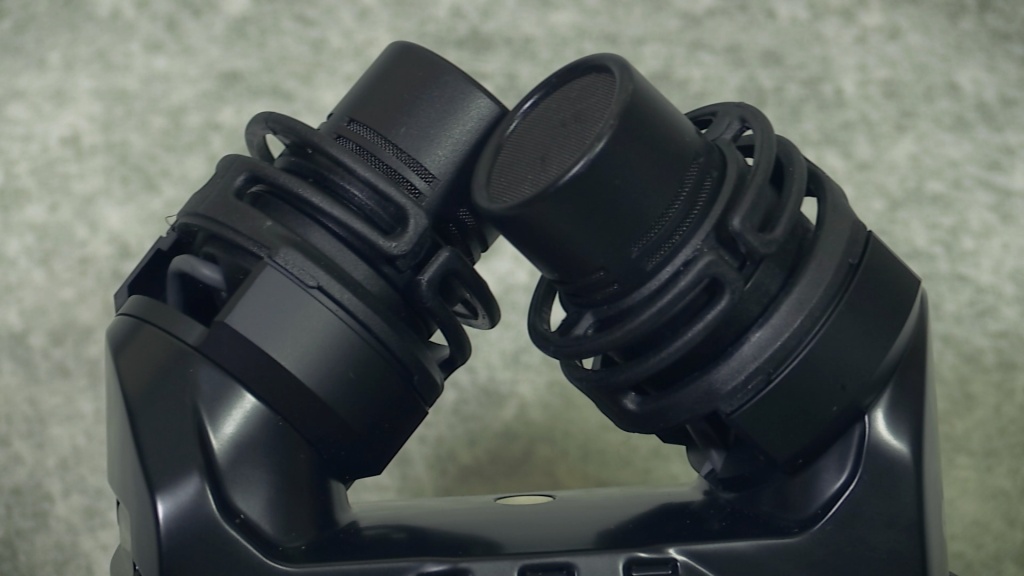
Each mic is mounted in suspension technology licensed from Rycote so as to isolate them from any bumps and shocks when filming and to make sure those bumps don’t get picked up as handling noise on the recording.
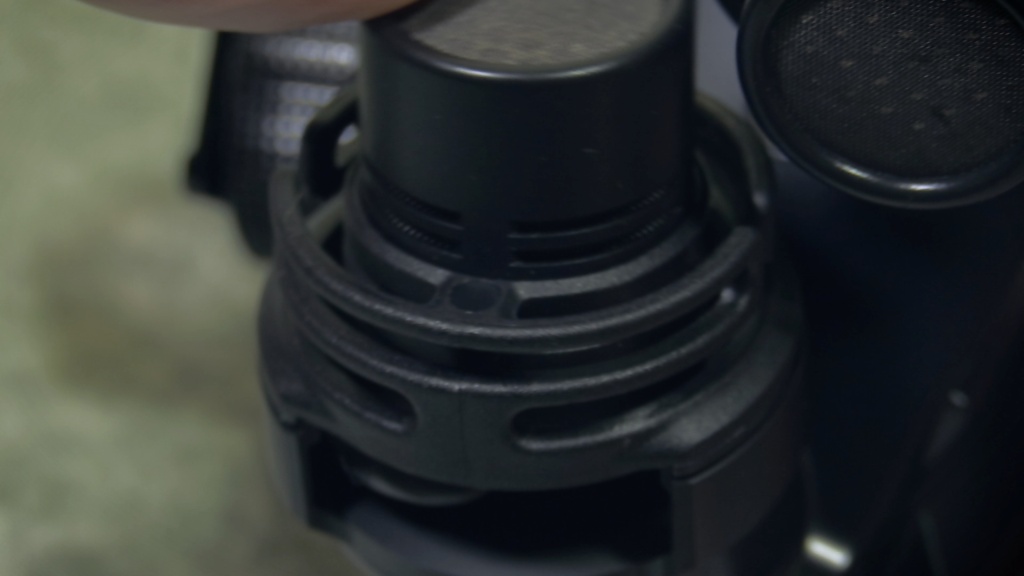
Connection to your camcorder is via two mini balanced XLR sockets into which phantom power can be fed although a suitable cable is not provided. Alternatively an unbalanced stereo output on 3.5 millimetre jacks is offered underneath the mic and the cable for this is included in the box.
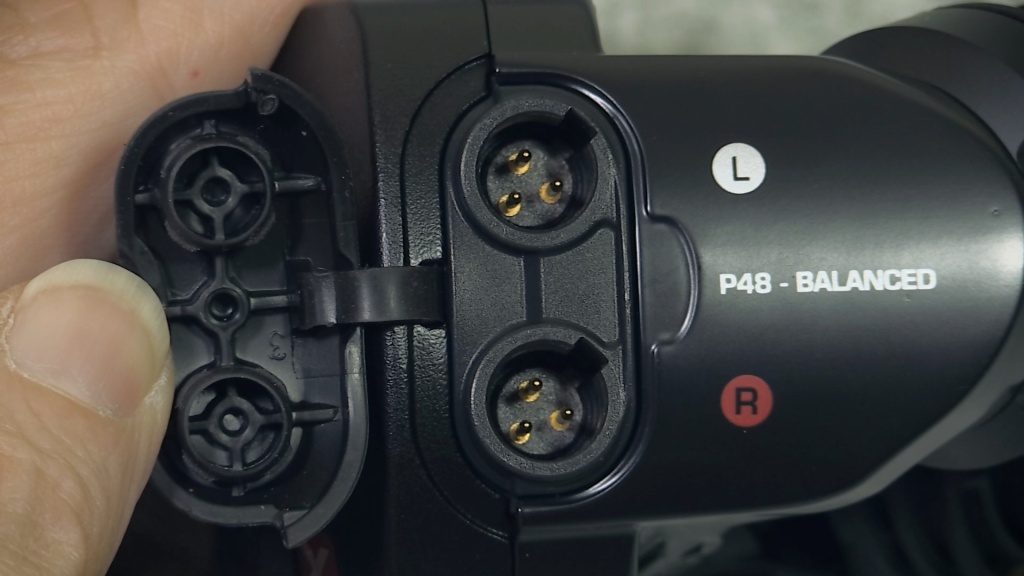
When not powering through XLR, a 9 volt battery must be inserted into the mic and this is said to last for 30 hours.
There are four buttons on the back; power on / off which must be held in for a second to operate so that’s it not knocked accidentally. Then there’s an attenuation selector, a low cut filter, and a high pass gain option for when using the windjammer.
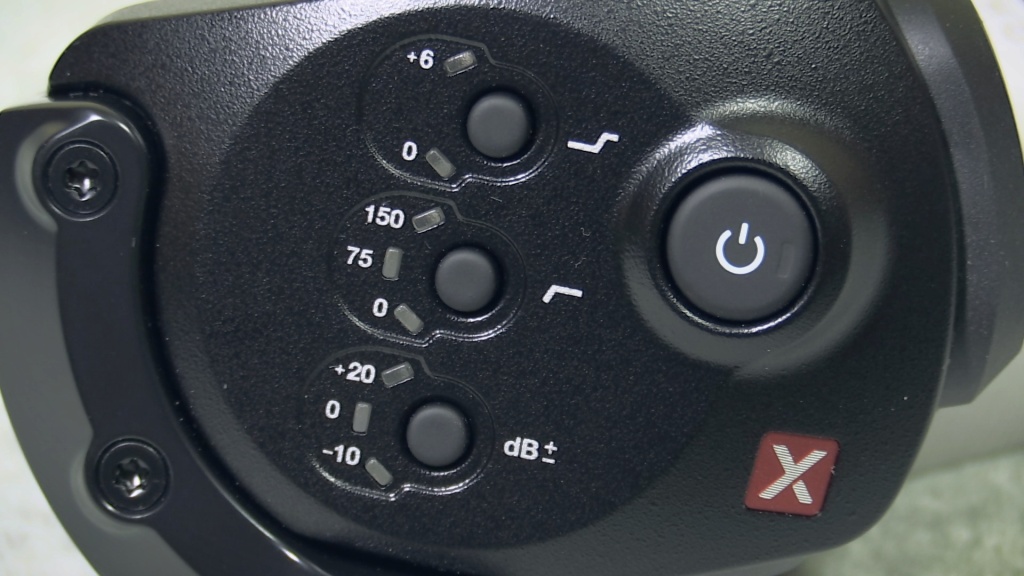
Underneath, the mic sports a standard cold shoe mount so you can stick it onto any normal camcorder.
Speaking of windjammers, the standard foam “death star” shield will keep faint breezes off the capsules perhaps in any ordinary room and it just pushed on to the mic, staying in place through friction and faith – but if you’re going outside then the “dead Ewok” windjammer will be needed which attaches in the same way and replaces the foam version. In our tests it kept the wind out perfectly well, though we didn’t film an any particularly extreme conditions.
On a camcorder, the mic is obvious but not offensively massive even on a handycam.
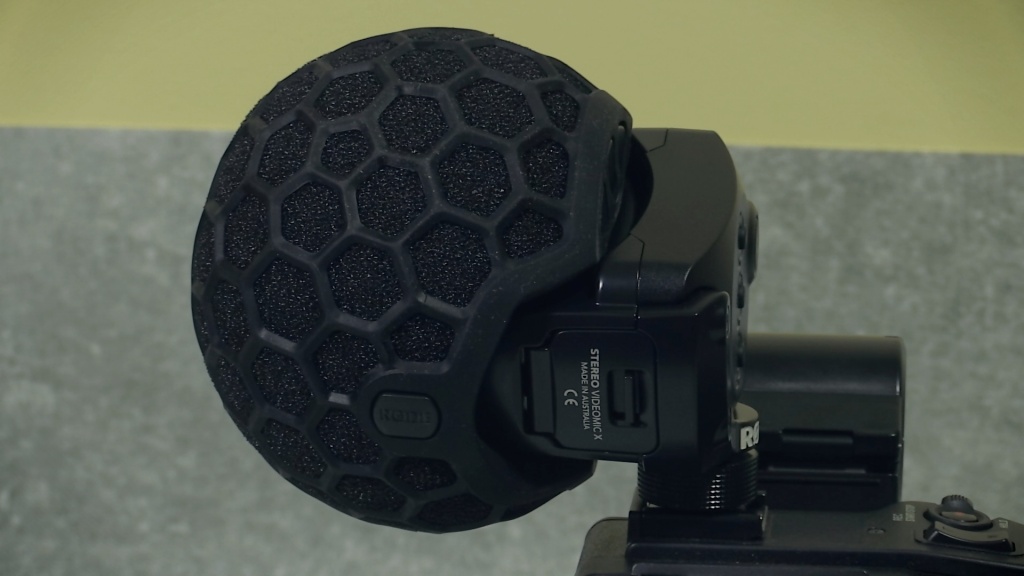
Rode are pitching this as a professional tool rather than an entry level piece of kit, promising acoustically-matched capsules and heady-duty construction with lots of RF shielding. Remember, this is not a shotgun and it’s not a dialogue mic – it’s is for getting good quality B-roll, cutaway shots, with stereo imaging on the audio to bring a sense of envelopment for the viewer and bring them into a scene.
With a maximum Sound Pressure Level – or SPL – of 143dB, you could in theory stand this mic just 100 feet away from a jet engine and it still wouldn’t overload, though we don’t recommend trying it for the sake of your ears. So what sounds should we try it on then? Well, there’s a selection in the video above.
In conclusion we have to say we like this mic. It is costly, yes, but it sounds great to our ears. At one point during an edit our Editor was convinced there was an airplane going overhead, only to discover when he pressed “stop” that the sound was on the recording he was editing. If you’re in the market for a compact, quality stereo mic for the top of your camera or camcorder then the Rode Stereo Videomic X is definitely worth a look and listen.
To buy this mic, please consider using our Amazon affiliate link as we get a small but very welcome commission that way: http://amzn.to/1wPb3P5
what is optimum shooting range? i’m trying to use it from about 5-8 away from object i’m recording
-Blake
It’s not really a “range” type of mic (like a shotgun). It’s very sensitive and will pick up sounds from quite a distance though obviously the further they are the more distant they will sound. All microphones like to be as close as possible (well, within reason, usually 1-3 feet is optimal) but it will depend on what you’re recording. So, if you’re filming jet engines, 5-8 feet is a bit too close; if you’re filming something very quiet then 5-8 feet could be too far. It’s impossible to say what’s right or wrong just based on distance. When I filmed the piano in our test video, the mic was about 1.5 metres from the nearest bit of the piano for example.
I noticed in one of your reviews you were going to compare the SMVX with other products. Have you managed to do that yet? I’m thinking about the SMVX pretty seriously but would like to have an idea of what the competition is and haven’t found much yet.
Also, thanks for the reviews – always good value.
Hello. Thank you for your compliment, much appreciated. I don’t think we were going to test the SVMX against anything except insofar as against the other mics we used in the video test, which was a pair of Sennheiser ME66/K6s. That was to see if a dedicated stereo mic was any better than a pair of monos.
We did take a (once very, very expensive) stereo mic along to the piano test – I forget which brand – but it was remarkably hissy. Perhaps it was faulty, perhaps a sign of age and technology moving on, so that sample never made it to the video.
Unfortunately then in this instance, we can’t really help as we have no further tests planned and nothing on the shelf to put it up against. Sorry. What’s your application for it?
Why haven’t Rode provided a specific mini XLR cable for this?
Something you’d have to ask them, I suppose! Presumably not everyone needs or wants the XLR but could be happy to use the included unbalanced minijack cable. The length is so short that it’s unlikely to pick up much electrical interference which is what XLR is designed to avoid so unless you only have XLR inputs you could well find the audio’s fine on the 3.5mm coiled cable.